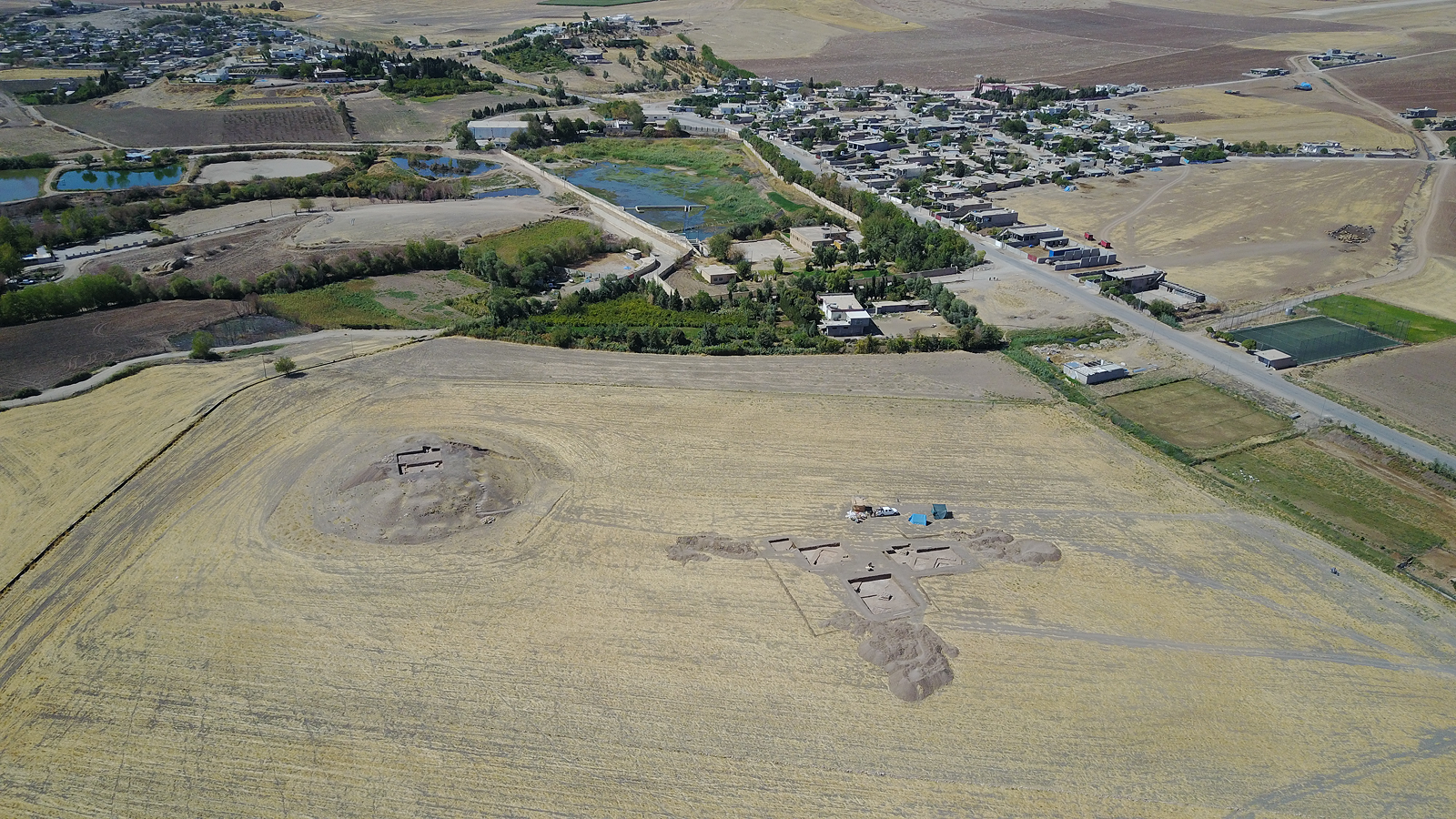Watch amazing video of cockatoos that learn to play 'golf'
Goffin's cockatoos play golf in an experiment exploring their ability to combine multiple objects into one tool.

In an incredible (and perhaps disconcerting) video, a Goffin's cockatoo (Cacatua goffiniana) named Figaro plays a game of putt-putt golf. With seeming ease, the bird places a ball on a platform before using a stick to sweep it into a hole. Researchers say that studying such behaviors in birds may shed some light on how humans learned to use our own tools.
Among animals, tool use is quite rare. Within that elite group of tool users, a select few are able to use compound tools, which are two or more objects used together for a common goal. Most human tools are compound tools — think an ax, with the metal head on a wooden handle, or a menagerie of objects working in concert like a car or a computer.
The first observation of a Goffin's cockatoo using a tool was "completely accidental," according to Alice Auersperg, head of the Goffin Lab at the Messerli Research Institute in Vienna's University of Veterinary Medicine. A graduate student had been observing Figaro, one of the cockatoos in the lab's aviary, when the bird dropped a rock through the outer grid of the aviary and used a stick to retrieve it.
Related: When humans are gone, what animals might evolve to have our smarts and skills?
"I got very excited about this, so we decided to put a nut where the stone had been," Auersperg told Live Science. Instead of using the stick again, Figaro pulled a bit of material from the enclosure itself and used it to quickly retrieve the nut. Since these first observations, scientists in Auersperg's lab have documented examples of tool use in 14 of the lab's Goffin's cockatoos, plus examples from wild populations.
However, these examples involved single tools, like a stick or a rock. The use of compound tools is considered a more difficult cognitive process. One of Auersperg's colleagues, Antonio Osuna-Mascaró, from the University of Veterinary Medicine, in Vienna had been interested in studying compound tool use in Goffin's cockatoos, but he faced several challenges when it came to designing the right experiment. Most composite tool-using species are primates, which have hands for easily fashioning tools. This means that he couldn't simply put the birds through tests designed for primates, many of which also have opposable thumbs. "I didn't want to test their bodily limitations," said Osuna-Mascaró, "but instead their limitations cognitively."
The Goffin lab is next to a golf course, which provided the inspiration for the experiment, Osuna-Mascaró told Live Science. Golf, after all, involves combining the use of a stick and a ball to reach a common goal of getting a treat. Goffin's cockatoos have no problem sweeping objects with a single stick, but whether they could combine the stick and ball into one tool was an open question.
Get the world’s most fascinating discoveries delivered straight to your inbox.
The experiment involved a box with a small "putting green" on the inside. The cockatoo, in order to receive a treat from the box, would have to place a ball onto the green and then "putt" that ball onto a collapsible platform that held a nut.
Five out of 11 of the birds figured out how to successfully retrieve the treat at least once. Figaro was the only bird in the experiment to solve the golf club task on his first try. His second try revealed some "outside the box" thinking, however. He figured out a way to fashion a tool that could directly collapse the platform without playing the golf game. In Osuna-Mascaró's words, "he cheated."
According to Osuna-Mascaró, the most amazing aspect was each bird's unique approach to solving the problem. "One of the birds operated the stick while holding it between the mandibles, one between the beak tip and tongue, and one with his claw, similar to a primate," he said.
Sarah Beck, a psychologist at the University of Birmingham in England and one of the study's authors, is interested in how animal models like the Goffin's cockatoo can shed light on human tool use, especially in children. Most children, by the age of 7 or 8, are using tools by the dozens. Think forks, remote controls and iPads. Children are surrounded by tools, but Beck said, human children often have trouble innovating with them.
"We've got these individuals who can use a lot of tools but maybe aren't so good at innovating compared to the opportunity perhaps are doing lots of problem- solving for themselves," Beck told Live Science. "In fact, children under 8 can really struggle to solve problems that cockatoos can master."
Yet human children are masters at a skill that cockatoos struggle with — imitating others. A follow-up experiment tested whether Goffin's cockatoos could learn to solve the golf test through observation. They found that while some birds could emulate what they saw, they had an easier time figuring the solution out for themselves.
Studying the abilities of non-primates to use compound tools might reveal the most important criteria for the evolution of tool use, as the brainpower to use them would have needed to evolve completely independently from primates, Beck said.
This research was published Jan. 27 in Scientific Reports.
Originally published on Live Science.

Cameron Duke is a contributing writer for Live Science who mainly covers life sciences. He also writes for New Scientist as well as MinuteEarth and Discovery's Curiosity Daily Podcast. He holds a master's degree in animal behavior from Western Carolina University and is an adjunct instructor at the University of Northern Colorado, teaching biology.


